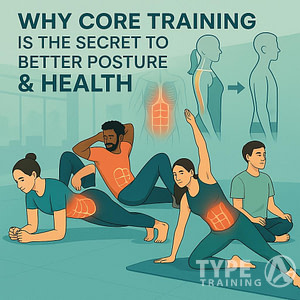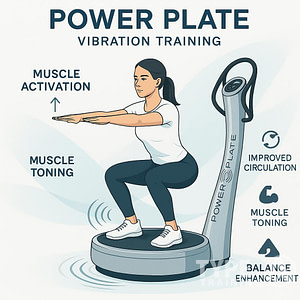Your attitude and actions around exercise shape how your daughter feels about being active. The way you model girls’ exercise habits and talk about physical activity can make a lasting impact on her own girls exercise habits.
Even small decisions, like inviting her for a walk or showing excitement about her sports, help develop positive girls’ exercise habits. This is crucial for her lifelong girls exercise habits.
Research shows that parents who model an active lifestyle give their daughters a stronger chance of embracing fitness themselves.
Popular posts:
Modeling positive girls exercise habits through your actions can inspire your daughter to adopt similar behaviors.
Mothers who work out, for example, can encourage their children to see physical activity as normal and enjoyable, rather than a chore. Being supportive—without pressure—helps your daughter stay motivated and build confidence in her abilities.
Incorporating girls exercise habits into family routines fosters a supportive environment for your daughter.
Key Takeaways
- Your example and support are crucial to your daughter’s exercise habits.
- Positive conversations about fitness foster healthy choices.
- Helping your daughter stay active builds confidence and resilience.
The Direct Impact of Parenting on Daughters’ Attitudes Toward Exercise
Your daughter’s outlook on exercise is shaped by many factors, particularly the girls exercise habits you model at home.
How you model activity, set clear expectations, and encourage your child can influence her lifelong relationship with physical health.
Understanding the Impact of Girls Exercise Habits
When you make exercise part of your routine, your daughter often sees it as a normal and valuable habit.
Children watch their parents closely, learning what is important based on daily actions. If you prioritize physical activity, your daughter is more likely to view it as worthwhile rather than a chore.
Encouraging girls exercise habits in a fun way can motivate her to stay active as she grows.
Research shows that parents who set a positive example by being physically active themselves help daughters develop healthy exercise habits.
Being a positive role model can include walking, biking, or even taking part in family sports.
Consistency and enthusiasm send a clear message: exercise is for everyone, not just for athletes.
By encouraging girls exercise habits, you help build a foundation for a healthy lifestyle.
Tips for modeling an active lifestyle:
- Invite your daughter to join you in activities to promote healthy girls exercise habits.
- Talk about how movement makes you feel, focusing on benefits like strength and energy.
- Show enjoyment, not just obligation.
Setting Expectations and Boundaries
Clear rules and boundaries help your daughter understand exercise is a regular, important part of her routine.
Clear rules about girls exercise habits will help your daughter understand their importance.
Setting family expectations, like outdoor time after school or limits on screen time, gives her structure while supporting healthy choices.
Being clear and consistent with these expectations shows responsibility as a parent.
Firm boundaries are not about punishment, but about creating good habits early. You might make a weekly family activity plan, or set regular check-ins about movement goals.
Boundaries can also mean protecting time for rest and allowing variety in activities.
Encouraging variety in girls exercise habits helps keep her engaged and motivated.
Balancing structure with flexibility helps your daughter stay engaged rather than overwhelmed.
Ways to set expectations:
| Expectation | Example |
|---|---|
| Active play daily | Walk after dinner |
| Limited screen time | 1 hour max on school nights |
| Try new activities | Join a beginner yoga class |
Balancing Encouragement and Pressure
Support and encouragement help your daughter feel confident about being active, but too much pressure can have the opposite effect.
Encouragement means noticing her efforts in developing girls exercise habits, not just achievements.
Research highlights that children benefit from parents who are supportive without being controlling.
If you push too hard or use rewards and punishments tied to exercise, your daughter may feel stressed or resistant. Instead, talk about what she enjoys and be open to her preferences.
Avoid using exercise as a consequence for behavior.
Discussing her girls exercise habits openly makes her feel valued and heard.
Ask how she feels about activities, and praise her for trying new things.
Showing that effort is valued more than perfection helps build a healthy attitude toward physical activity.
For more details on how parental supportiveness impacts a child’s physical activity, see recent research on the topic.
Communication Strategies for Fostering Healthy Exercise Habits
Understanding her feelings about girls exercise habits can strengthen your bond.
Supporting your daughter’s relationship with exercise starts with how you talk about it at home.
Honest conversations can help build strong habits and address concerns about both mental health and body image.
Open Communication About Physical Activity
Having clear, positive talks about exercise with your daughter is an important first step.
This lets her know you care about her well-being and gives her the chance to share her own thoughts. Ask her what activities she enjoys and be sure to listen without judgment.
It helps to talk about girls exercise habits in a way that focuses on fun and feeling good.
You might create a family activity routine together. Setting realistic expectations and keeping your discussions supportive can encourage her to try new activities and build confidence.
Families play a crucial role in shaping healthy habits, as highlighted by Nuffield Health.
Discussing the Benefits for Mental Health
Talking openly about the mental health benefits of exercise can motivate your daughter beyond just physical appearance.
Exercise can help her manage stress, boost mood, and improve focus at school. Being clear about these points shows that health is about more than looks.
Try giving simple examples. For instance, you can mention how a walk outside can relieve anxiety or how playing a sport can help her make friends and feel more confident.
Encouraging conversations about feelings related to exercise will show that it’s safe to talk about mental health in your home.
Parents who discuss healthy habits help their children see the value in being active for mind and body.
Navigating Conversations Around Body Image
Many girls feel pressure about how they look, which can shape their views of exercise.
It’s important to talk about body image with care and understanding. Avoid talking about weight or comparing bodies—focus on what their bodies can do and how exercise helps them feel strong or energetic.
If your daughter brings up worries about her appearance, respond with empathy.
Reinforcing positive girls exercise habits can help her develop a love for being active.
Use statements that highlight her skills, interests, and efforts, not just looks.
You can also share facts about how all bodies are different and that health comes in many shapes and sizes.
Being honest about these topics can help her develop a positive self-image and a balanced approach to exercise.
Encouraging Independence and Personal Choice in Exercise
Helping your daughter make her own choices about exercise is important for her confidence and motivation.
Giving her responsibility and supporting her independence can make her more likely to enjoy staying active for years to come.
Fostering independence in her choices around girls exercise habits encourages her to take ownership.
Supporting Autonomy in Activity Selection
Letting your daughter pick the type of physical activity she likes helps her stay motivated.
When she chooses, she feels more in control and is more likely to stick with it long-term.
Encourage her to try different sports, classes, or activities until she finds something she enjoys.
Listen to her preferences and avoid pressuring her into activities she does not find fun.
You can use open-ended questions such as:
- What kinds of movement make you feel happy?
- Is there a new sport or class you want to try?
If she changes her mind about an activity, support her decision to switch.
Support her decisions in developing girls exercise habits she enjoys.
Independence in choice teaches her to trust her own interests and builds a positive relationship with exercise.
Research shows that when parents act as role models instead of enforcers, girls are more likely to develop a healthy attitude towards fitness.
Building Responsibility Through Routines
Having a regular routine helps your daughter develop good exercise habits.
Let her be part of setting up weekly schedules so she feels responsible for her own fitness.
Use charts, planners, or phone reminders to make routines easy to follow.
Include her input on when and how often she wants to exercise.
Allowing her to help make the plan gives her a sense of responsibility and shows that you trust her to make choices.
You can gently check in and offer encouragement, but avoid nagging or punishing missed sessions.
Celebrate when she sticks to her plan. Recognition and positive feedback help her see exercise as her own goal, not just something you want her to do.
This approach helps build self-discipline and confidence over time.
Popular Physical Activities for Daughters
Encouraging girls exercise habits can lead to better health outcomes and social well-being.
Staying active helps daughters build strong muscles, feel happier, and develop healthy habits for life.
Two easy options that work well for many families are walking and swimming, which keep your child moving and provide both health and social benefits.
Walking as a Simple and Effective Option
Walking is a great starting point for any age.
It’s free, needs no special equipment, and can fit into your daily routine.
You can walk together as a family after dinner, to school, or at the park.
Making it a habit can encourage your daughter to see movement as a normal part of her day.
Benefits of walking for daughters:
- Strengthens bones and muscles
- Improves mood and reduces stress
- Offers time for you to talk and bond
Turning walking into a fun activity, like a scavenger hunt or walk to the local shop, can keep your daughter interested.
Try to pick safe, interesting routes, and let her help choose where to go.
Even 20-30 minutes a few times a week makes a difference.
Family walks can also support a positive attitude toward exercise.
Swimming for Physical and Social Benefits
Swimming gives you a full-body workout without much risk of injury. It helps daughters improve heart health and build muscle.
Becoming a strong swimmer is a vital life skill. Plus, swimming is just plain fun for a lot of kids.
Lessons or family swims are often available at local pools—sometimes you just have to ask around.
Why choose swimming?
- Works every major muscle group
- Builds confidence in the water
- Supports teamwork and social skills in group classes
Joining a swim class lets your daughter make friends and learn from others. Swimming can also boost her confidence as she masters new skills.
If you swim with her, you’re modeling a healthy lifestyle and getting some valuable time together. Pool activities like games or races keep things light and engaging for both of you.
For more tips on family exercise habits, group activities like swimming can make a real difference.
Managing Barriers: Screen Time, Social Media, and Peer Influence
Balancing your daughter’s use of screens and social media with healthy habits is tricky but important. Clear boundaries and positive guidance can help her manage challenges from both technology and friends.
Limiting Screen Time Positively
Too much screen time can crowd out activities that keep your daughter active and healthy. As a parent, you’ve got a big role in setting limits that actually work for your family.
Experts recommend creating consistent routines and clear rules around devices. For example, screen-free times during meals or before bed can open up space for more movement or family talk.
Discussing the value of limiting screen time helps promote active girls exercise habits.
You can encourage her to try new activities instead of extra screen time. Parks, sports, or just going for a walk together—sometimes the simplest things work best.
If you show genuine excitement about these options, your daughter’s more likely to join in and actually enjoy them. For more on the impact of parents as gatekeepers, see this advice on navigating screen time.
Navigating Social Media Pressures
Social media can shape how your daughter sees herself and what she thinks is normal. Some girls feel pressure to look or act a certain way because of what they see online.
Setting healthy boundaries is a good start. Try having open talks about what your daughter sees on her favorite apps.
Encouraging her friends to join in on physical activities can reinforce positive girls exercise habits.
Ask her how she feels about the posts or comments and remind her that online images are often filtered or staged. It’s easy to forget that behind-the-scenes reality is usually very different.
Teach your daughter how to use privacy settings and to think before posting or sharing information. Encourage her to take breaks from social media and spend more time with friends face-to-face.
Read more about balancing risks and benefits from adult support around teens and social media.
Promoting Healthy Social Relationships Through Exercise
Physical activity isn’t just about fitness. Supporting your daughter’s participation in exercise gives her a chance to grow friendships and learn social skills.
She’ll also build empathy, which is a huge plus.
Supporting Friendships and Group Activities
Exercise is a great way for girls to make new friends and strengthen existing ones. Group activities like team sports, running clubs, or dance classes help kids spend time together in a fun, supportive setting.
Shared goals and challenges in physical activities help create a sense of belonging. You can encourage your daughter by inviting her friends to join in or signing up for group classes.
Even just encouraging play at the park can make a difference. Structured group exercise helps girls build trust and learn to cooperate.
Sharing girls exercise habits with friends can create lasting memories and bonds.
Unstructured play offers more chances to talk and have fun, making it easier to form lasting connections. Positive friendships can help your daughter feel confident and supported.
Cultivating Empathy and Collaboration in Sports
Sports give girls the chance to practice empathy and teamwork. When they play on a team, they need to understand how others feel and work together.
These experiences teach them to listen, compromise, and respect their teammates. You can help your daughter develop empathy by talking about how others might feel after a win or a loss.
Encourage her to be a supportive teammate, cheer on others, and help someone if they’re struggling. When coaches and parents show encouragement and fairness, kids are more likely to support one another.
These skills carry over into school, friendships, and family life. They stick around longer than you’d think.
Girls-Only Outdoor Kids Fitness Class
Joining a girls-only outdoor fitness class gives your daughter a comfortable place to get moving. These classes focus on making exercise fun, not stressful, and let girls of all abilities participate.
Outdoor settings add extra benefits—fresh air, space, and a change of scenery. A girls-only class helps create a positive atmosphere where your daughter and other girls can try new activities and make friends without fear of judgment.
Instructors usually use group games, teamwork challenges, and simple routines. This helps girls focus on what their bodies can do, not what they look like.
Instructors who focus on girls exercise habits can instill confidence in young girls.
Confidence and friendships tend to grow naturally from that. For more ideas, see ways family engagement in exercise shapes healthy attitudes.
Helping Daughters Build Resilience Through Physical Activity
Building resilience in your daughter through exercise takes some practical steps and steady support. Learning how to respond to challenges or social issues during physical activity helps her gain skills she’ll use outside of sports, too.
Building resilience through girls exercise habits can provide lifelong benefits.
Acting as a Mediator in Team or Group Conflicts
Conflicts pop up when your daughter joins team sports or group activities. Knowing how to step in as a mediator matters.
Listen to all sides of the story and encourage your daughter to express her feelings clearly. Ask her how she feels and help her name what happened without blaming others.
Guide her through finding fair solutions. You can model calm problem-solving by describing your thoughts and listening to others.
Talk about the value of compromise and understanding different points of view. If things get heated, remind her and others to take a break and return to the conversation when everyone’s calmer.
Use these moments to show her that disagreement doesn’t have to ruin teamwork. She’ll learn how to work with different personalities and handle stress.
These conversations help her feel stronger and more confident when new challenges come up. It’s not magic, but it sure helps.
Fostering Persistence and Resilience
Exercise gives your daughter a safe place to mess up and try again. Let her know it’s totally normal to miss a shot or lose a game—everyone does.
Encourage her to keep at it, even when she’s frustrated or tired. Try to praise the effort she puts in, not just the scoreboard, so she learns to care more about growing than being perfect.
Help her set small goals she can actually reach in her activities. When she hits one, celebrate it together, even if it feels minor.
If she falls short, talk about what she might try differently next time. Sticking to a daily or weekly routine can really help build resilience, too—the American Psychological Association has some thoughts on that.
Share stories from your own life about times you struggled and got back up. It’s a reminder that resilience isn’t magic—it’s something we all practice, sometimes clumsily, but it gets easier.
Promoting girls exercise habits helps your daughter navigate challenges confidently.














